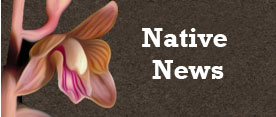NC Native Plant Society:
Plant Details
Quercus michauxii [= Quercus prinus]
Swamp Chestnut Oak, Basket Oak, Cow Oak
Scientific Name: |
Quercus michauxii [= Quercus prinus] |
|---|---|
Genus: |
Quercus |
Species Epithet: |
michauxii |
Common Name: |
Swamp Chestnut Oak, Basket Oak, Cow Oak |
Plant Type |
Tree |
Life Cycle |
Perennial |
Plant Family |
Fagaceae (Beech Family) |
Native/Alien: |
NC Native |
Size: |
72-100 ft. |
Bloom Color(s): |
Red, Yellow |
Light: |
Sun - 6 or more hours of sun per day |
Soil Moisture: |
Moist, Wet |
Bloom Time: |
April |
Growing Area: |
Piedmont, Sandhills, Coastal Plain |
Habitat Description: |
Bottomland forests, especially in fertile soils of upper terraces where flooded only infrequently and for short periods, upland depression ponds, sometimes on moist lower slopes. Uncommon in NC Piedmont, common in Coastal Plain. |
Leaf Arrangement: |
Alternate |
Leaf Retention: |
Deciduous |
Leaf Type: |
Leaves veined, not needle-like or scale-like |
Leaf Form: |
Simple |
Life Cycle: |
Perennial |
Wildlife Value: |
Important for Wildlife |
Landscape Value: |
Suitable for home landscapes |
State Rank: |
S5: Secure (*Key) |
Global Rank: |
G5 - Secure (*Key) |
Notes: |
This tree is mildly resistant to damage by deer. Host plant for Banded Hairstreak, Edward's Hairstreak, Gray Hairstreak, White-M Hairstreak, Horace's Duskywing, Juvenal's Duskywing butterflies, and many moths. Acorns are eaten by woodpeckers, Blue Jays, ducks, small mammals, Wild Turkeys, white-tailed deer, and black bears. |
|
Leaves The leaves are roughly diamond-shaped, wider above the middle, and pale underneath. Up to 6" wide and 9" long. Jack Spruill, Hampstead, July, 2010 Q. michauxii grows best in bottomlands that are periodically flooded. The acorns are sweet and prized by small mammals and by livestock (thus the Cow Oak name.) |
|
|
Bark Bark is pale gray with scaly plates, similar to White Oak, Q. alba. Jack Spruill, Hampstead, July, 2010 |
|
|
Fall leaves Jack Spruill, Hampstead, Nov 2010 |
|
|
Margins are wavy with rounded teeth that are also sometimes described as small lobes. Confluence Natural Area, Orange Co., NC
Bettina Darveaux |
|
|
Early Fall color. Confluence Natural Area, Orange Co., NC
Bettina Darveaux |
|
Links: |
|
back to top
go to plant details search
go to plant images search
go to gallery home
back to Initial q Gallery
back to orchids
back to Carnivorous Plants
back to Trilliums




![Margins are wavy with rounded teeth that are also sometimes described as small lobes. of Quercus michauxii [= Quercus prinus] The Scientific Name is Quercus michauxii [= Quercus prinus]. You will likely hear them called Swamp Chestnut Oak, Basket Oak, Cow Oak. This picture shows the Margins are wavy with rounded teeth that are also sometimes described as small lobes. of Quercus michauxii [= Quercus prinus]](https://ncwildflower.org/images/plants/Quercus_michauxii_IMG_0056_BD.jpeg)
![Early Fall color. of Quercus michauxii [= Quercus prinus] The Scientific Name is Quercus michauxii [= Quercus prinus]. You will likely hear them called Swamp Chestnut Oak, Basket Oak, Cow Oak. This picture shows the Early Fall color. of Quercus michauxii [= Quercus prinus]](https://ncwildflower.org/images/plants/Quercus_michauxii_IMG_0064_BD.jpeg)


